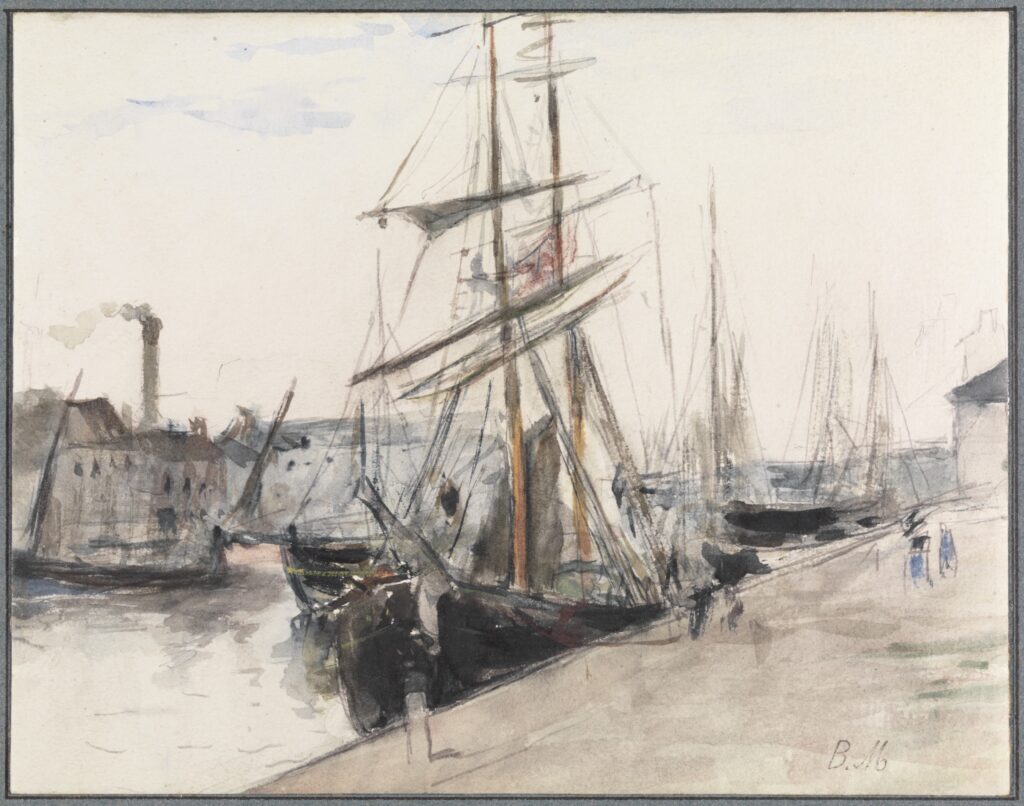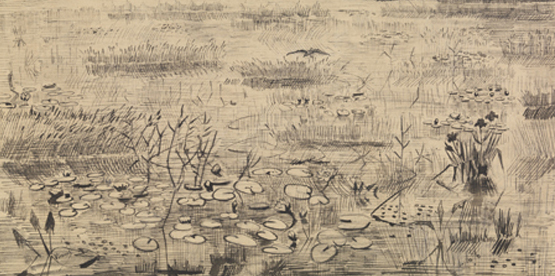The Impressionists, and later the Postimpressionists, were both lauded and criticized for their revolutionary painting techniques, yet these artists were equally groundbreaking in their radical drawing practices. Experimental Lines: Impressionist and Postimpressionist Drawings from the Collection of Mr. and Mrs. Paul Mellon explores this revolutionary graphic innovation.
The exhibition begins with early 19th-century works by Jean-Auguste-Dominique Ingres, Jean-Baptiste-Camille Corot, and others who laid the foundation against which the Impressionists reacted. On April 15, 1874, an exhibition by the Anonymous Society of Painters, Sculptors, and Printmakers, etc., opened in Paris. This landmark event would become known as the First Impressionist Exhibition and introduced artists such as Edgar Degas and Camille Pissarro to broad audiences.
Drawings by Pierre-Auguste Renoir, Paul Cézanne, Georges Seurat, and their colleagues highlight quintessential Impressionist subjects, including the landscape, modern life, and the racetrack, to consider the ways that artists working in France during the second half of the 19th century used drawing to articulate a new approach to depicting their environment.
Drawing provided an opportunity to push the boundaries of traditional composition and use of color as well as to record ephemeral conditions of the landscape and scenes of modern life—concepts for which their paintings are well known, but which would not have been possible without these experiments on paper. In a rarely seen early drawing by Vincent van Gogh, the artist uses a series of repetitive marks and cross-hatching to suggest the effects of a gentle breeze on the marshy landscape near the Dutch village of Etten. These emotive lines prefigure the expressionism of Van Gogh’s later works.
Incorporating works in graphite, ink, pastel, and watercolor, the drawings in this exhibition range from quick sketches and preparatory images to finished, stand-alone compositions, which all present the innovative role drawing played in the Impressionist artistic process.
This installation was curated by VMFA’s Theresa A. Cunningham, PhD, Assistant Curator of European Art and the Mellon Collections. For an online presentation of this exhibition, visit Experimental Lines: Impressionist and Postimpressionist Drawings in our Collection Stories.

The Harbor at Cherbourg, 1871 (Le Port de Lorient), 1871, Berthe Morisot (French, 1841–1895), pencil and watercolor. Virginia Museum of Fine Arts, Collection of Mr. and Mrs. Paul Mellon, 2012.66
Marsh with Water Lilies, Etten (detail), 1881, Vincent van Gogh (Dutch, active in France, 1853–1890), pen and India ink on wove paper with graphite underdrawing. Virginia Museum of Fine Arts, Collection of Mr. And Mrs. Paul Mellon, 85.777


